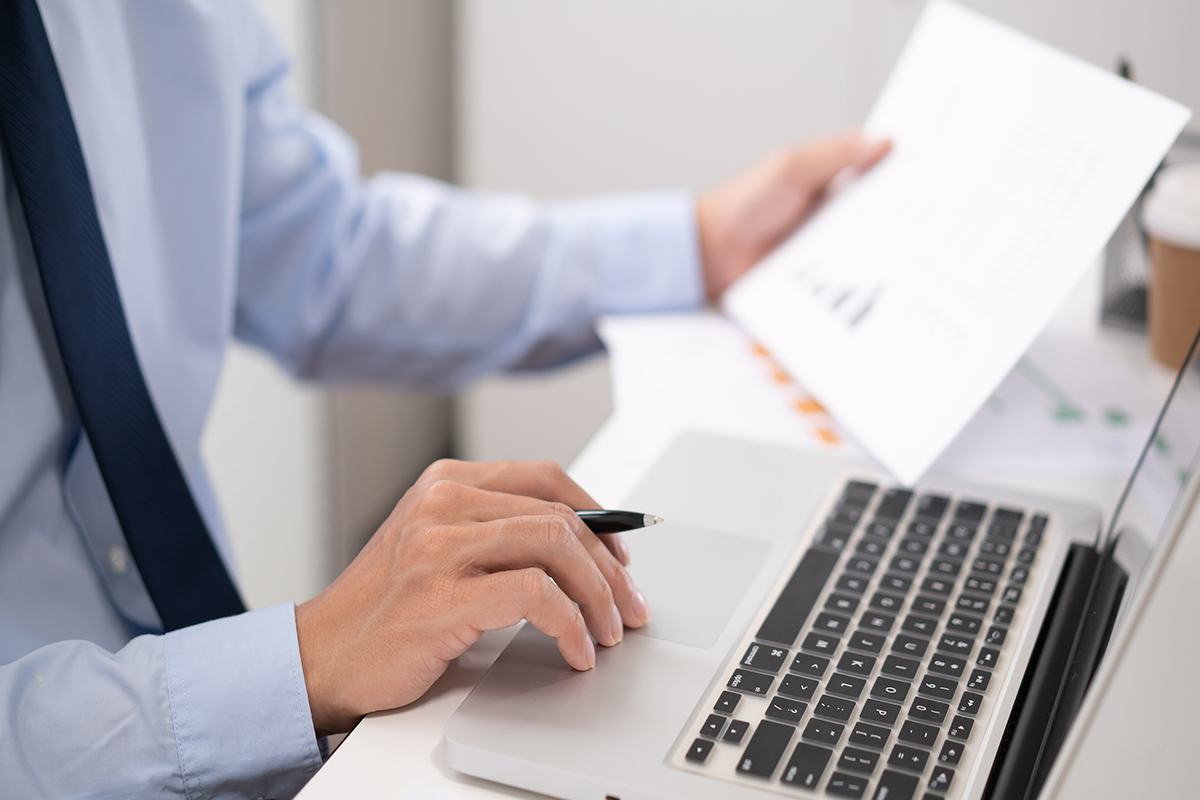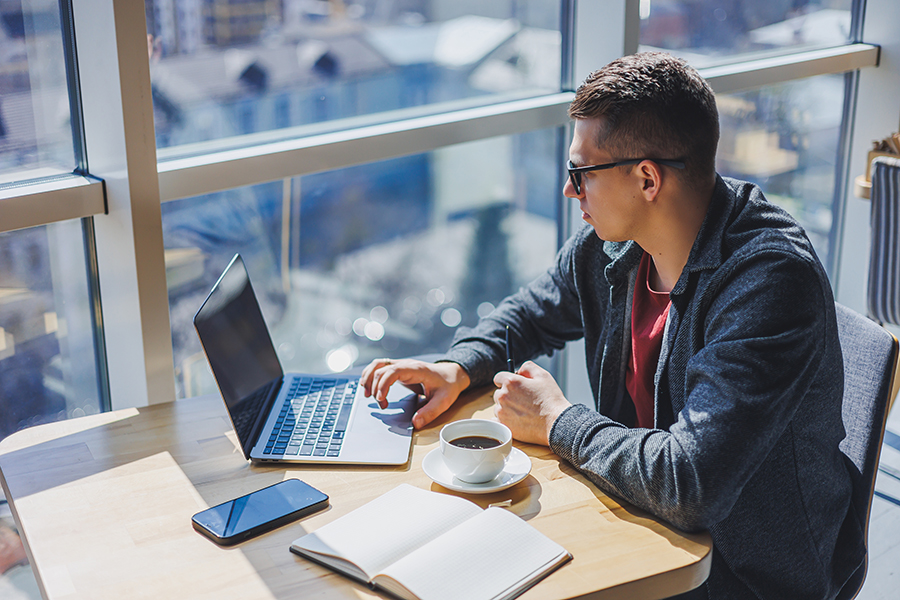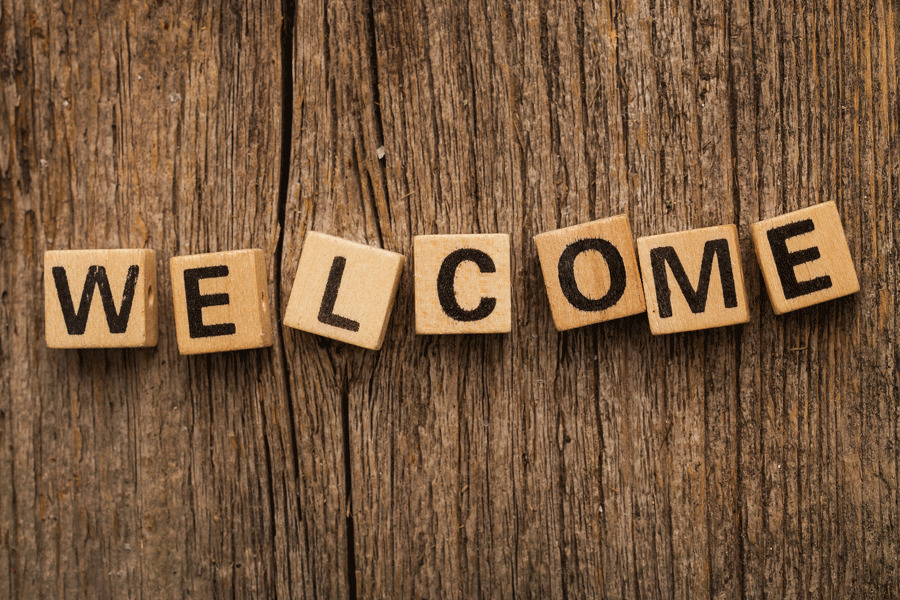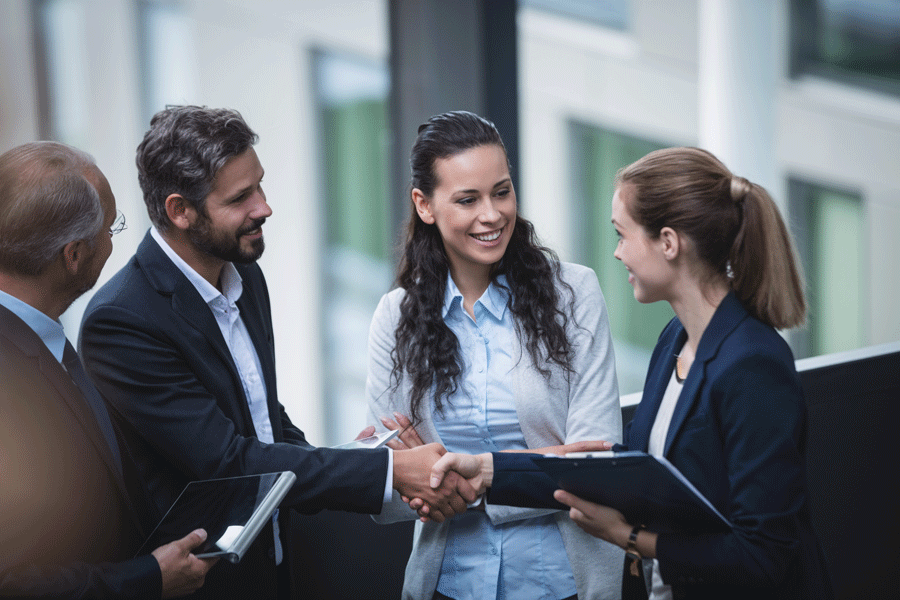A letter of introduction is a formal, personalized introduction- typically in the form of a business letter or email- sent from one person to an individual (i.e., a business associate).
The letter typically includes a brief biography of the introduced individual and any other pertinent information about them. An introduction letter serves to inform the recipient about the person being introduced, as well as their background and business/personal interests.
Letters of introduction can be written by the potential employer, current employee, or even a friend or co-worker. They can also be written by an individual seeking employment with another company or organization.
The letter, if well written, can lead to professional business relationships, new employment opportunities, partnership opportunities, and even merger and acquisition opportunities. It is recommended that the letter be sent via electronic mail, as this allows the recipient to view and respond to the letter immediately, unlike handwritten or paper mail.
Whether you want to write a letter of introduction for yourself or your colleague, this article will provide you with all the information you need to be able to write the perfect introduction letter.
Types of Letter of Introduction
A letter of introduction can be used to introduce an individual to another for various reasons. The reasons range from business to personal, and they affect the type of letter that should be used.
Common situations that warrant the use of an introduction letter include:
One colleague to another
If you want to introduce your colleague to another to seek employment, organize an event, or just make them acquitted, you can use this letter. A letter of introduction, in this case, can be formal or informal, depending on the relationship between you and your colleague.
Clients or customers
If you want to introduce your clients or customers to other potential clients or customers, you can use this letter. In this case, the letter is meant to ensure that the client/customer feels comfortable meeting the other party and vice versa.
New team members
When new employees are added to an already existing team, it is important for the other employees to get a quick briefing on the new member. This briefing can be done via a letter of introduction. The letter should briefly state the new team member’s profile and professional background. It should also brief them on the department they will be working with, expectations they should meet, and any other important information that you think will be useful to them.
A job candidate
These letters are also used to introduce job candidates to the companies they are applying to. In this case, the letter serves as a form of personal background check on the potential employee and should also mention any other pertinent details such as previous employment, references, and achievements.
One professional contact with another
If you want to introduce a colleague or client of yours to another professional contact, you can use this letter. The letter, in this case, should contain facts about the person being introduced, such as their job title, achievements, and professional background. It should also briefly mention your relationship with the person and the company they work for.
What a Letter of Introduction is NOT
A letter of introduction is usually confused with letters of recommendation, cover letters, and referral letters. It is important to understand that although the letter serves almost the same purpose as the aforementioned letters, there are some major differences.
Here is why the letter should not be confused with other letters:
A cover letter
Cover letters are used to provide brief personal information about a person applying for a job and are usually accompanied by their resume. The personal information can be anything from their academic or professional background to the skills that they have acquired. However, while cover letters usually give details about the applicant, a letter of introduction gives the details about the person being introduced and is geared towards creating a rapport between the person being introduced and the receiver.
A recommendation letter
Recommendation letters, also referred to as reference letters, are letters written on your behalf by someone who knows you and your skills. The key difference between the two is that, unlike introduction letters, where the person writing the letter already knows the recipient, the person writing the recommendation letter may not know the recipient.
A referral letter
Referral letters are usually confused by most people to be recommendation letters or introduction letters because they have aspects of both. Referral letters are usually written when someone is introducing themselves, just like in introduction letters, only that they are writing because they have been advised to do so by a mutual acquaintance.
Common Elements to Include in a Letter of Introduction
Although the nature and purpose of the letter of introduction differ, there are some common elements that all these letters should have.
These elements include:
A greeting
A letter should begin with a greeting. The greeting can be either formal or informal. It generally depends on the type of letter you are writing and the relationship between you and the person you are writing to.
for instance
If you are writing to an acquaintance or a business partner, the greeting can be informal, while if you are writing to a colleague or a boss, the greeting should be formal.
Purpose of the letter
The next thing that should always be included in a letter is the actual purpose of the letter. For instance, if you are writing a letter to a colleague and introducing them to another colleague, you should state that the letter is meant for introductions and not for any other purpose.
EXAMPLE
“I would like to introduce you to…” or “I would like to introduce you to a colleague…”
Relevance of the contact
The next thing that should be included in a letter is the relevance of the contact. For instance, if two parties are involved in the introduction, you should state what each person should expect from the other.
EXAMPLE
“Jane Smith works with me at company XYZ where I am a manager, and she is currently applying for a position with your company. I would like to introduce you to each other as Jane has more than five years of experience working in the monetarist industry and is actively looking for new opportunities.”
Details of the person you are introducing
The next thing that should be included in a letter is a brief profile of the person being introduced. This includes the first and last name of the person being introduced as well as other important and relevant details.
EXAMPLE
“Jane Smith has more than five years of experience working in the financial industry and specializes in asset management.”
If you are introducing yourself to a business partner, you should add your personal information.
EXAMPLE
“I have more than five years of experience working in the financial industry and specialize in asset management.”
Position and function of the person you are introducing
The next thing that should be included in a letter is the relevance of the role the person being introduced can play and a brief overview of their career.
EXAMPLE
“Jane Smith is presently working with my company as a financial consultant” or “Jane Smith works with me at company XYZ where I am a manager.”
If you are writing to an acquaintance or colleague, you can also include their occupation and work experience.
EXAMPLE
“Jane Smith is my colleague at XYZ, and she is an experienced financial consultant with more than five years of experience. She specializes in asset management.”
Purpose of writing the letter of introduction
The next thing that should be included in an introduction letter is a brief explanation as to why you are making the introduction.
EXAMPLE
“I would like to make an introduction between Jane and yourself because Jane is currently looking for new opportunities, and I think she will be a great asset to your company.”
The expected outcome or a CTA
The next thing that should be included in an introduction is the expected outcome or a call to action. What do you expect to happen as a result of the introduction? What is the next step that each of the parties should take? A clear call to action will help both parties take the next step.
EXAMPLE
“I would like to arrange a meeting between the two of you to introduce yourselves and discuss the possibility of working together.”
Any necessary contact information
Another key item that should be included in the introduction is relevant contact information, such as the email address or phone number of the person being introduced. If you are emailing the letter, make sure to CC the email of the person being introduced to ensure they receive a copy of the letter. If there is any other contact information, include it in the letter.
EXAMPLE
“Jane Smith is available for a phone call at 555-666-000 or a meeting to discuss the possibility of working together.”
Closing
The next thing that is essential in a letter is a closing. Closing is basically a polite way of saying thanks and goodbye. It should be short and simple yet effective. The closing should be followed by your signature.
EXAMPLE
“Thank you for giving me the chance to introduce you two. I am looking forward to working with both of you in the future.
Regards,
_________ Your name.”
Sample Letter
Given below are sample letters that you can use as a guide for writing your own letter of introduction:
Sample Letter 1
Dear Mr. Thompson,
I am writing to introduce you to BlueTech Innovations, an emerging leader in the field of advanced robotics. Founded in 2018, BlueTech has quickly distinguished itself with its cutting-edge designs and customer-centric approach. Their products have been instrumental in streamlining operations in various sectors, including manufacturing and logistics.
One of BlueTech’s remarkable achievements is the development of the RBX-300, a versatile robotic system designed to enhance efficiency in industrial settings. This system has garnered significant attention for its adaptability and ease of integration into existing workflows. Furthermore, BlueTech’s commitment to sustainability is evident in their use of eco-friendly materials and energy-efficient processes.
I believe that a partnership between BlueTech Innovations and your company, Thompson Manufacturing, could be mutually beneficial. Your expertise in large-scale industrial manufacturing complements BlueTech’s technological innovations. This synergy could lead to groundbreaking advancements in industrial automation, potentially setting new industry standards.
To facilitate a meeting or further discussion, I have attached BlueTech’s portfolio and contact details. Mr. James Bell, the CEO of BlueTech, is keen on exploring potential collaboration opportunities and is available for a meeting at your earliest convenience. I am confident that this introduction will pave the way for a fruitful partnership.
Best regards,
Elizabeth Harding
Sample Letter 2
Dear Ms. Patel,
I am pleased to introduce to you GreenLeaf Accounting Services, a firm that has revolutionized the accounting industry with its innovative solutions. Established in 2015, GreenLeaf has earned a reputation for providing exceptional financial services tailored specifically to small and medium-sized enterprises.
GreenLeaf’s standout service is its cloud-based accounting platform, which offers real-time financial insights and simplifies complex financial processes. This platform has been praised for its user-friendly interface and robust security features, ensuring that client data is always protected. Moreover, GreenLeaf’s team of certified accountants is known for their proactive approach and personalized client support.
Considering your company’s recent expansion and the increasing complexity of your financial operations, I believe Greenleaf Accounting Services could be an invaluable asset to Patel Retail Group. Their expertise in financial management and strategic planning would be instrumental in supporting your business’s continued growth and success.
To initiate a conversation, I have included GreenLeaf’s brochure and the direct contact information for their lead accountant, Mr. Derek Foster. He is eager to discuss how GreenLeaf can tailor its services to meet the unique needs of Patel Retail Group. I am confident that this introduction will lead to a lasting and beneficial relationship for both parties.
Warm regards,
Michael Anderson
Analysis
The provided sample letters serve as exemplary models for crafting professional business introduction letters due to several key aspects. Firstly, they adhere to a clear structure consisting of four well-defined paragraphs, which facilitates easy readability and ensures all necessary information is methodically presented. Each letter begins with an introduction of the sender and their intent, immediately clarifying the purpose of the correspondence.
A crucial element in these letters is the detailed introduction of the business being recommended. This includes not only a brief history of the company but also highlights specific achievements or products, like the RBX-300 in the first letter and the cloud-based accounting platform in the second. Such details are vital as they provide the recipient with a clear understanding of the business’s capabilities and specialties.
Additionally, the letters expertly establish the relevance of the introduced business to the recipient’s needs.
EXAMPLE
The potential synergy between BlueTech Innovations and Thompson Manufacturing is discussed in the first letter, while the second letter outlines how GreenLeaf Accounting Services can aid the expanding Patel Retail Group
This targeted approach demonstrates a deep understanding of both the recipient’s and the introduced business’s operations, enhancing the letter’s persuasiveness.
Finally, each letter concludes with a call to action, providing contact details and expressing a readiness for further discussion. This not only facilitates the next step in potential collaboration but also shows the sender’s initiative and commitment to fostering a business relationship. These aspects collectively make the letters comprehensive, targeted, and effective tools for business introduction, adhering to professional standards and the specific requirements of such correspondence.
Letter of Introduction Examples
Writing a great letter is about understanding the type of letter you are writing, the type of introduction, and who is being introduced. To help you write effectively, we have provided pre-made introduction letter templates that you can download for free and tailor according to your preferences. The templates are easy to use, and you can use them multiple times when writing letters for various purposes.
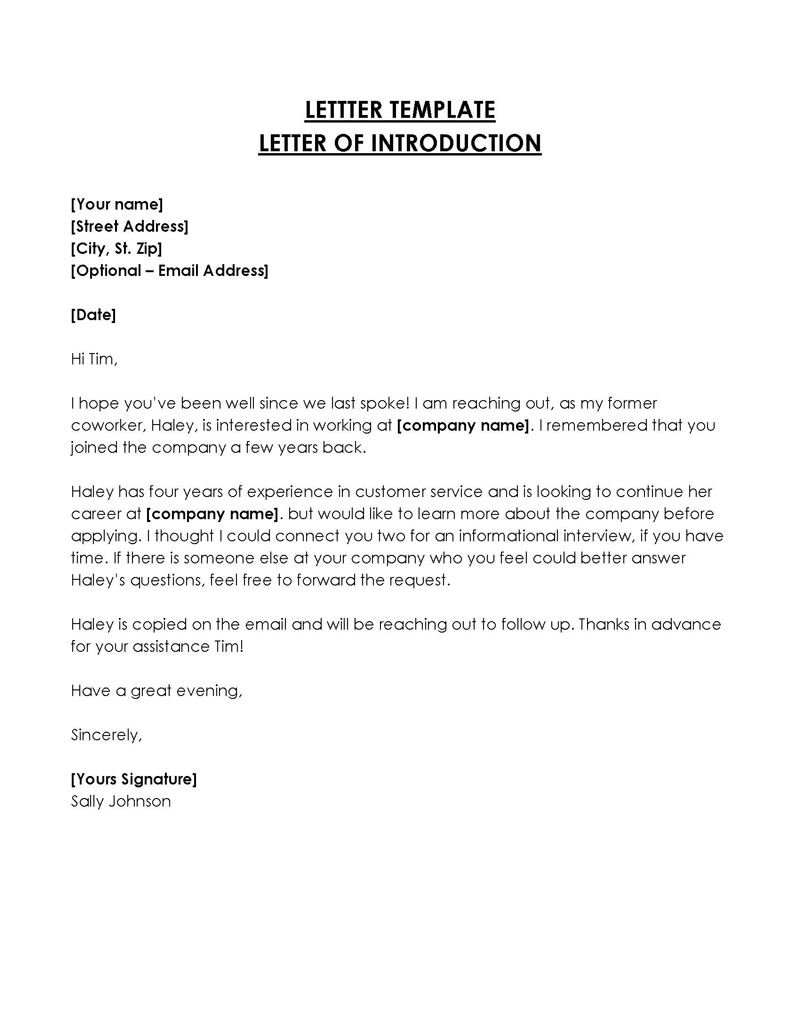
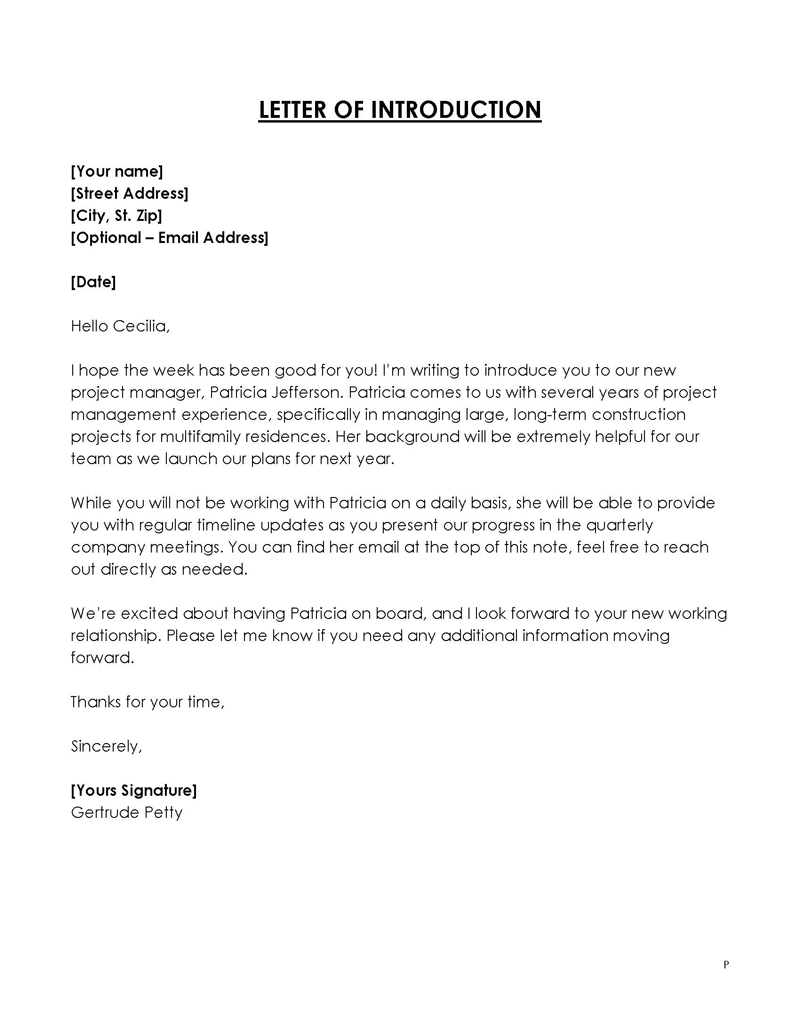

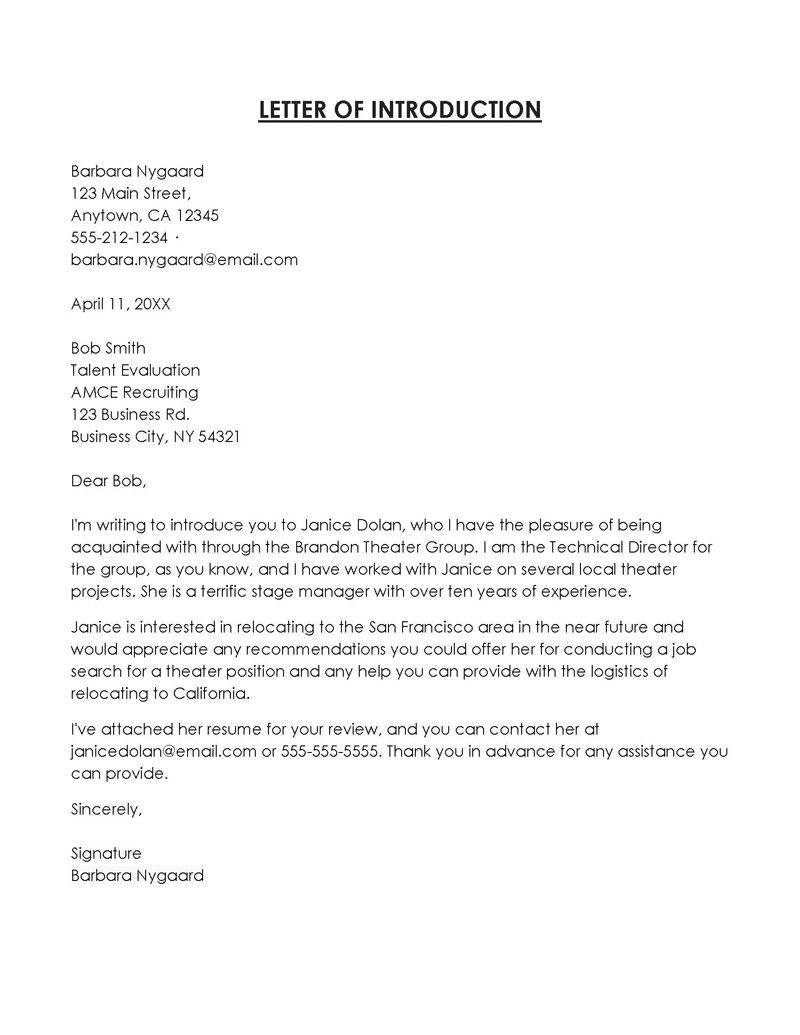
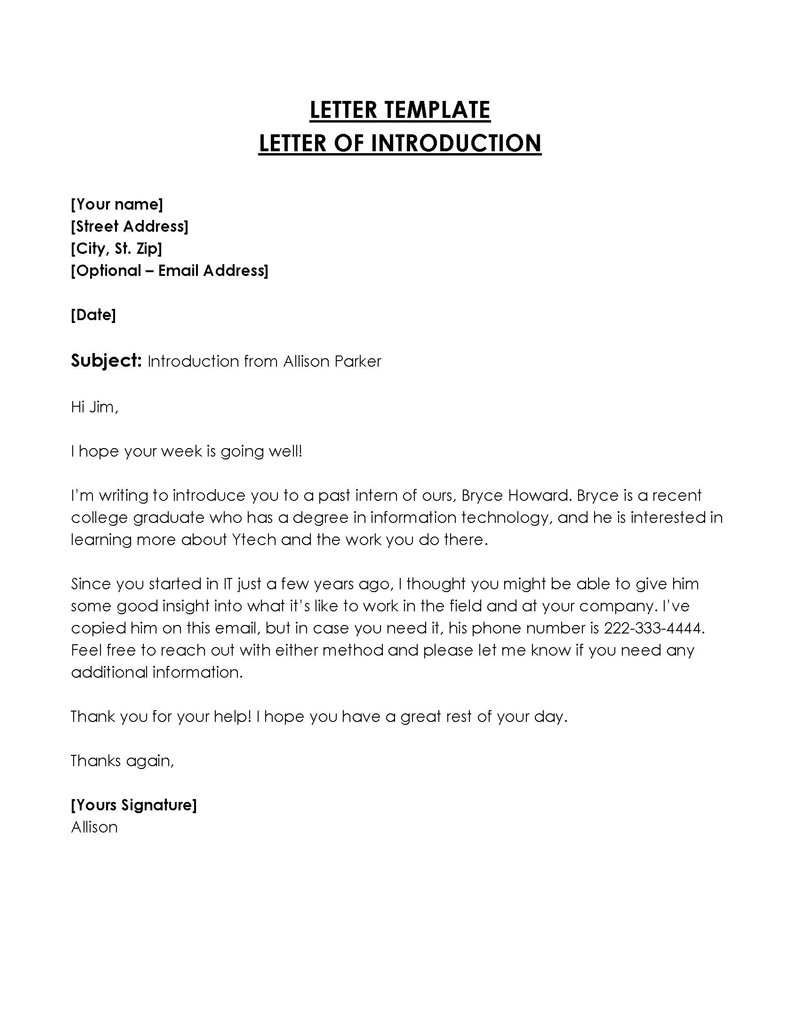


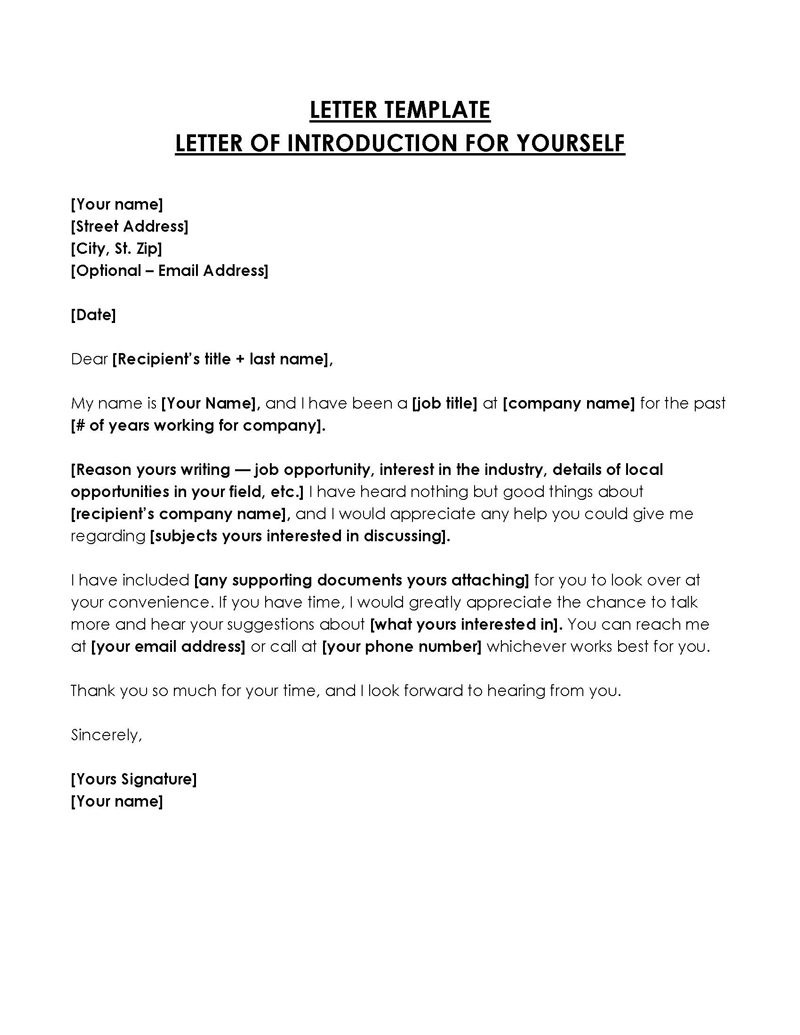

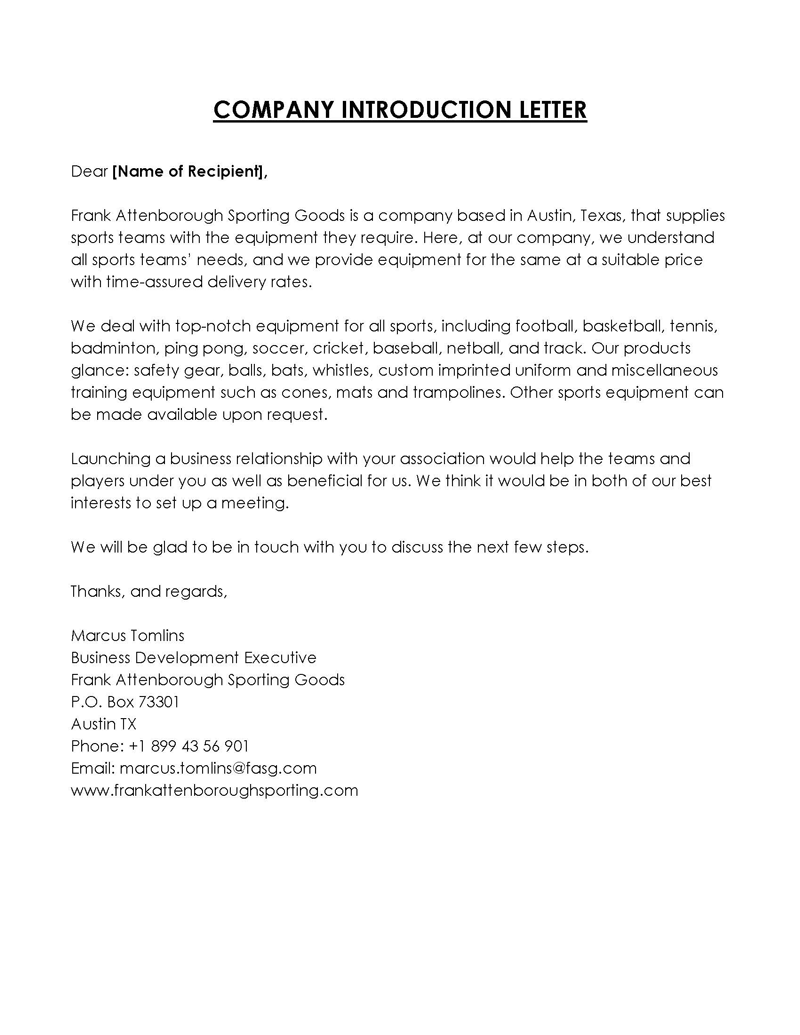
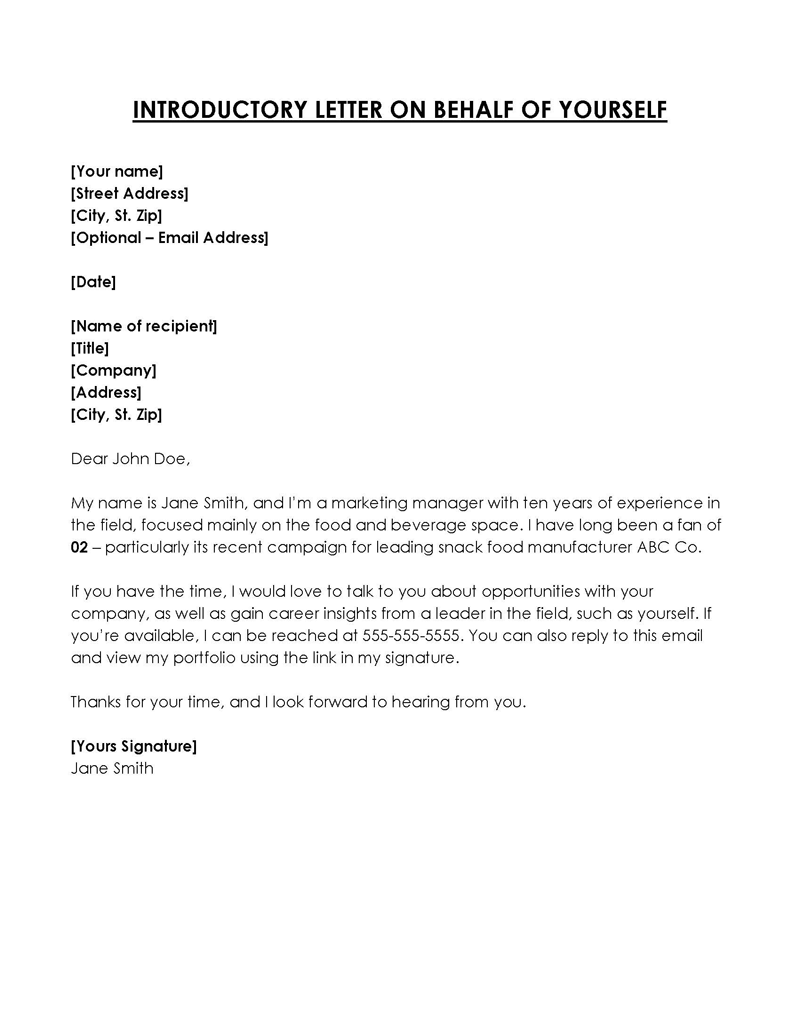
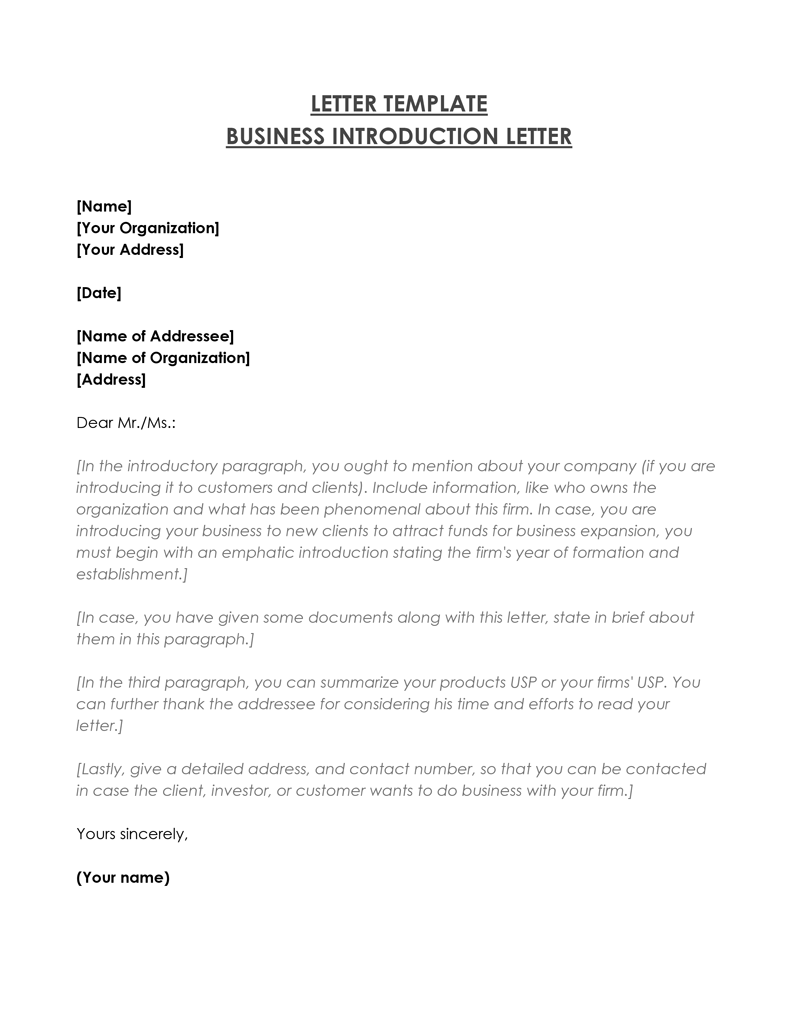
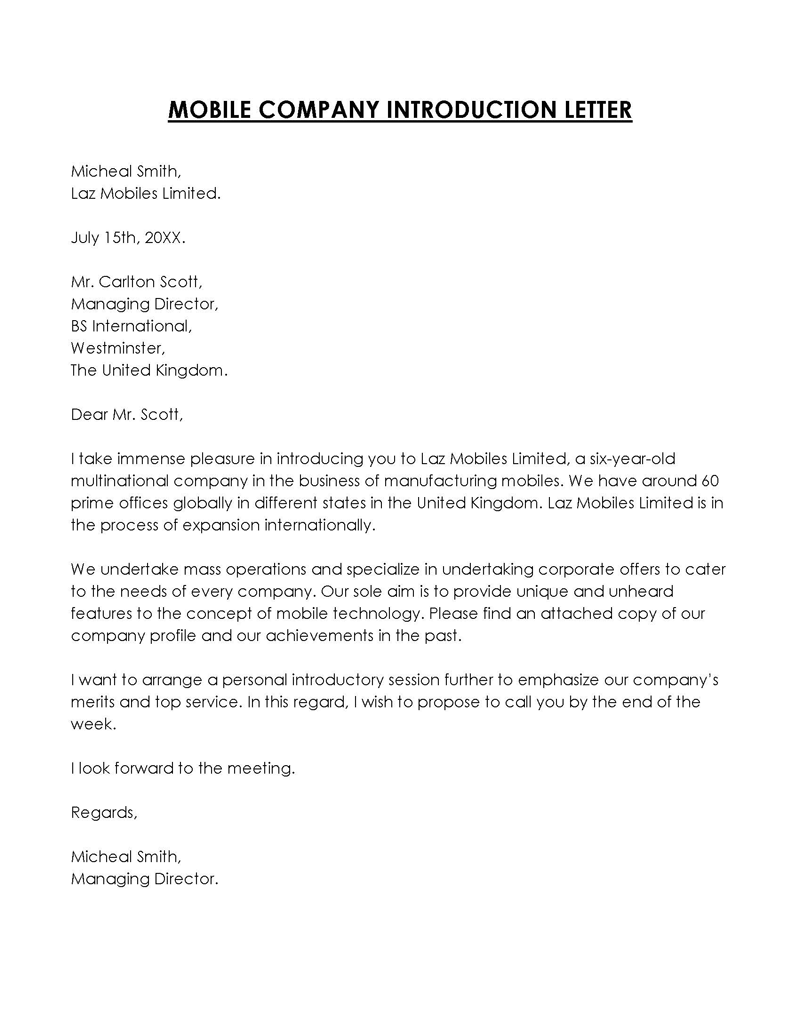
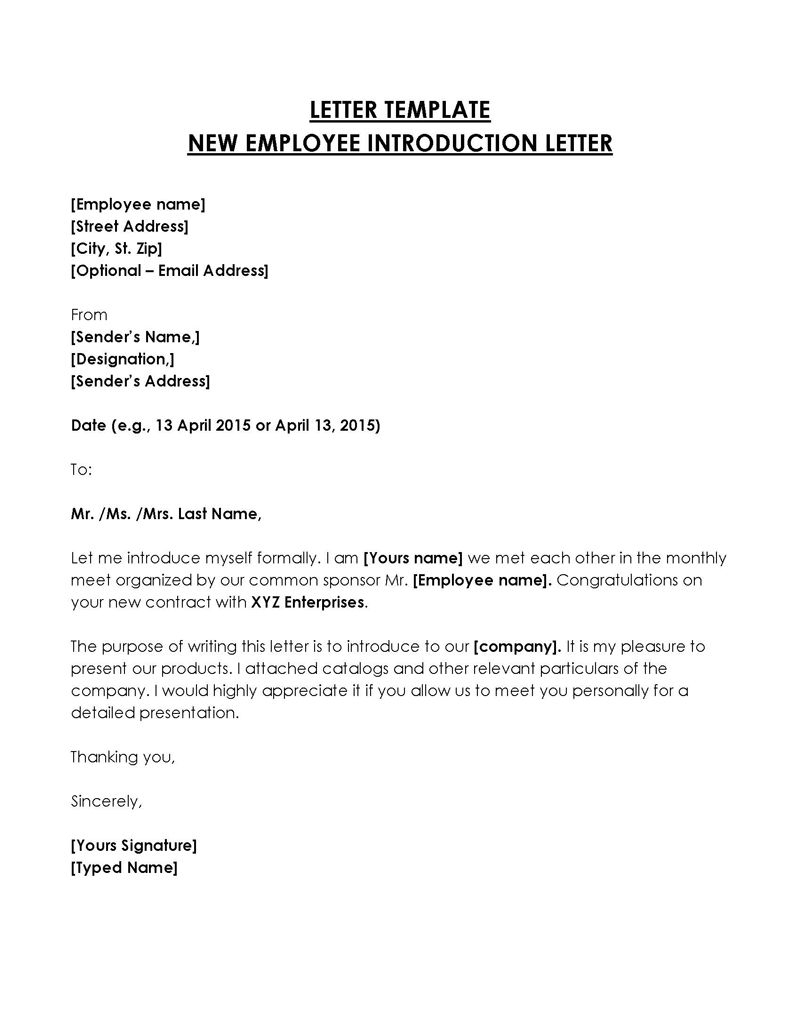
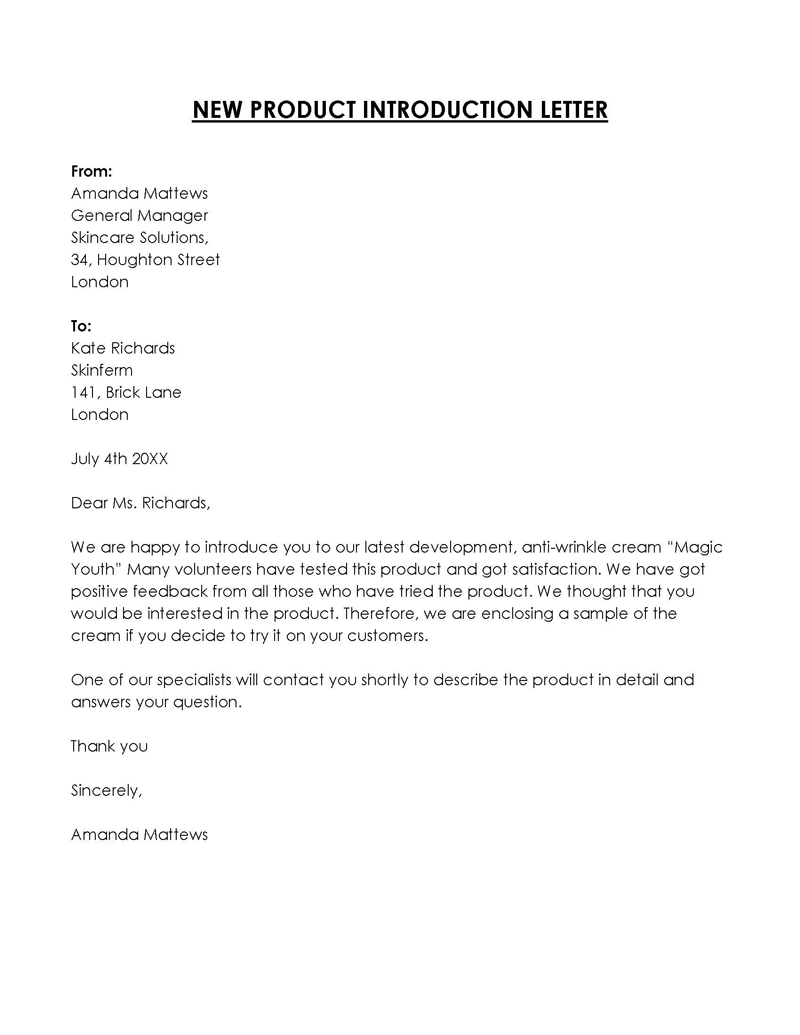

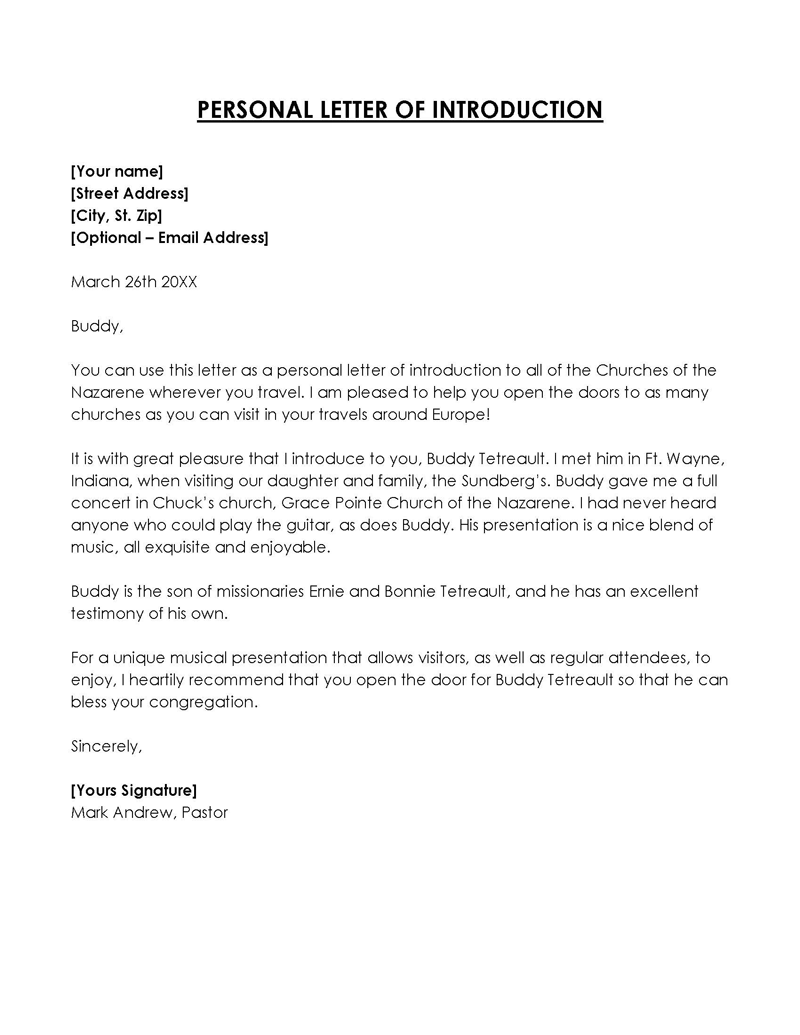



6 Tips to Write a Quality Letter of Introduction
There are certain key things you want to do when writing a letter. These key tips will help you write a letter that will be beneficial to both parties:
Research the recipient
Knowing your recipient is important for a variety of reasons. Firstly, it will help you address the recipient properly. Secondly, it will let the recipient know you did your research and took the time to learn about their company or business. Thirdly, it will let them know you value their time, and they will feel valued by the time they read your letter.
Tailor your introduction
The recipient will first read your letter. Make sure that you tailor the introduction to the person.
EXAMPLE
If the recipient is your potential client, then make sure you include information about your business that is relevant to them. If they are another business, then speak about how what they do is relevant to your industry.
Set expectation
What are you expecting to happen as a result of writing the letter? Do you expect them to meet in person? Do you want them to give you feedback on your performance, product, or service? Do you want anything from them at all? Clearly state what your expectations are in the letter. If it is advisable for both parties to meet, then set a date to do so by including it in the letter.
Match your tone to your relationship
When writing a letter, you should be well-versed in your relationship with each individual. If they are a simple acquaintance of yours, then you should be respectful yet casual. If they are your customer or a colleague, then you should use your normal business tone but also express politeness and respect. If the relationship is more formal and professional in nature, then make sure that your letter matches their level of formality.
Be brief and to the point
A letter of introduction should be brief and to the point. Avoid being long-winded by including irrelevant information, long stories, and unnecessary details. If they are not relevant or necessary to your recipient, then they are not necessary to include. Include just enough information to make your introduction convincing and concise while also allowing your recipient room to learn more about the person being introduced.
Proofread it multiple times
Before sending your letter, make sure you proofread it. You will want to make sure it is grammatically correct and that you include all the necessary information to make your recipient want to meet you or the person being introduced.
Key Takeaways
- Before you start writing the letter, make sure you know exactly who is being introduced.
- Then, determine what your role in introducing them will be. Are you a third party introducing two friends? Are you going to introduce yourself as well? Are you on the same team as the person being introduced?
- Next, decide how formal, informal, or professional your tone will be based on the relationship between yourself and each individual.
- Once you have these details, you can proceed to write the body of the letter.
- The body of the introduction letter should include a brief introduction of yourself or the person being introduced and then a brief introduction of the recipient, along with why they would be interested in meeting with that person.
- Finally, wrap up your letter by mentioning anything else important, such as where you will be meeting, any time frames, or what you expect to accomplish.

